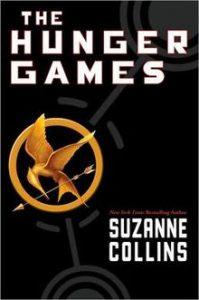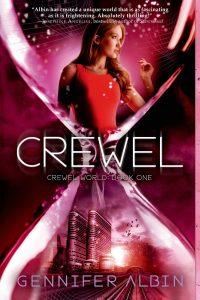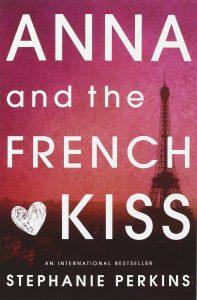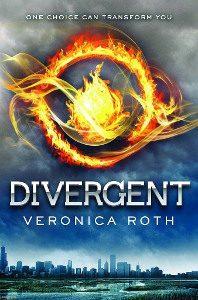Don’t Stop Believing – The Journey to Stronger Plots
When I look back at the 185 rejection letters I got from agents when I was trying to get representation for my very first book, I find one common theme throughout. And it usually looked something like this:
Great voice! No story.
Granted, that original book never sold and I never went back to revise it. But this common piece of feedback forced me question the way I approached my writing. Particularly the way I approached the concept of story and plot.
It’s the journey…not the destination.
How many times have we heard this nugget of wisdom? Well, you’re about to hear it again. Because this is what I discovered on my path to finally writing a novel that would sell. Here it is in all of its glorious simplicity:
All well-told stories are about two kinds of journeys.
An external journey (the one that the character physically takes) and an emotional or internal journey (the transformation that occurs as a result of that physical journey.)
Let’s talk about the external journey first. As it’s the easiest one to grasp. I firmly believe that all compelling books involve a character who embarks on some type of journey.
In The Hunger Games by Suzanne Collins, Katniss embarks on a really exciting and dangerous journey to the elusive Capitol to compete in the Hunger Games.
In Harry Potter and the Sorcerer’s Stone by J.K. Rowling Harry sets off on a journey through the wizarding world and more specifically, through Hogwarts School for Witches and Wizards.
In Shadow and Bone by Leigh Bardugo, Alina journeys into the mysterious world of the Grisha, the country of Ravka’s group of magical elite.
In The Selection by Kiera Cass, America is on a dramatic and often heartbreaking journey through the world of royalty and into the Prince’s heart.
Starting to get the picture, yet?
“But wait!” you’re probably saying. (I can hear you from here.) What about the books where the character doesn’t actually go anywhere? There are tons of awesome stories that don’t involve Capitols and Magical Worlds, right?
You bring up a VERY good point.
And it’s a good thing you asked, because that’s exactly what I’m going to talk about next.
A journey doesn’t have to physically take your character anywhere. He/she doesn’t have to go to another country, or through a portal to another dimension, or even across the street. Journeys can occur right in a character’s own home.
The key thing to remember is this:
A journey exists when your character tries something new.
WOAH! How simple is that? Almost too simple! But it’s true.
All great stories are about a character who tries something new. Whether it be because they want to (Lena’s choice to defy the rules and pursue a relationship with Alex in Delirium by Lauren Oliver) or because they’re forced to (Deuce’s death-defying journey to Topside in Enclave by Ann Aguirre).
Either way, your character has to break out of her comfort zone and do something different with her life. Otherwise, what’s the point of the story? Why do we want to read about a character who does the same thing every day and never takes any risks? Never tries anything new? Never goes anywhere?
We don’t.
That’s why as authors it’s our job to set up a really interesting and flawed character and then push her into something new, something unfamiliar, something unknown. Those are the stories readers love to read about.
Let’s look at some more examples of external journeys in which the character stays exactlywhere they are:
In Eleanor and Park by Rainbow Rowell, both Eleanor and Park step out of their comfort zones (and in Eleanor’s case, her physical safety zone) in order to explore a relationship with someone new and exciting.
In The Fault in Our Stars by John Green, Hazel journeys into a new and exciting relationship with Augustus and then leaves her safe haven to travel to Amsterdam to meet her literary idol (two journeys for the price of one).
And even my own 52 Reasons to Hate My Father and My Life Undecided feature characters that try new things without actually going anywhere.
In 52 Reasons, Lexi doesn’t leave her home or her family. But the fact that she has to work 52 low-wage jobs in order to earn her trust fund is a journey in and of itself. Because it’s a new way of life for her. And it introduces her to new people she wouldn’t have met before.
In My Life Undecided, Brooklyn still goes to her same school and lives in her same house, but her approach to life has changed. She now posts all of her decisions on her blog and asks her blog readers to vote on what she does. Her journey lies in letting other people make decisions for her.
So if you’re working on a book right now or brainstorming a new story, ask yourself, “What is my main character’s journey? How is he/she trying something new?”
Okay, external journeys. Are you good? Does it make sense? Good, let’s move on.
Now, let’s talk about the other kind of journey…the emotional (or internal) journey.
Why do we send our characters out into a strange new world and force them to try strange new things? Probably because there’s something they need to learn while they’re out there on that strange new journey.
If your character is flawed (which believe me, she should be!) then that means she is missing something. Missing an understanding of some key principal in life.
The strength to forgive, perhaps? The ability to love? To trust? To take responsibility for her actions? What about the awareness of her own power? All of these things (and more!) are what I like to call “Universal Lessons.” And they happen to show up in many different stories (whether you notice them or not.) Why? Because they not only are they universal lessons, they are also human lessons.
They are the lessons you, me, your neighbor, and your uncle Bob can relate to. Because we’re human too. They are the themes that give your story heart. And depth. And purpose.
And it’s up to you, the writer, to not only figure out what key universal lesson is missing from your character’s life, but also to figure out how they’re going to find it.
This is the crux of the emotional journey. This is why we send our characters out on their external journeys in the first place. So they can find that missing piece in their soul and fix it. So they can become a little more whole and a little less flawed.
I know! I know! You want more examples. Don’t worry, I’ve got you covered. Here are some popular YA titles broken down into (overly simplified) external and internal journeys:
 The Hunger Games by Suzanne Collins
The Hunger Games by Suzanne Collins
External Journey: A girl is forced to leave her home and fight to the death in an arena with 23 other teens.
Internal Journey: A girl finds the strength to stand up to the corrupt Capitol and right an epic wrong.
 Crewel by Gennifer Albin
Crewel by Gennifer Albin
External Journey: A girl is recruited to be a Spinster for the Guild and enters a dangerous new world of manipulation and power.
Internal Journey: A girl discovers her own power and how to use it.
 Anna and the French Kiss by Stephanie Perkins
Anna and the French Kiss by Stephanie Perkins
External Journey: A girl is forced out of her comfort zone when she travels to Paris for a school year abroad and falls in love for the first time.
Internal Journey: A girl learns how to love and how to break free from an old life that no longer serves her.
 Unremembered by Jessica Brody
Unremembered by Jessica Brody
External Journey: A girl with no memories goes on a journey to discover the truth about her past, the boy who claims to love her, and the people who are hunting her down.
Internal Journey: A girl learns how to trust in feelings and emotions she can’t remember.
 Divergent by Veronica Roth
Divergent by Veronica Roth
External Journey: A girl transfers to another faction within her community and experiences a completely different way of life.
Internal Journey: A girl discovers who she really is and how to embrace her own divergence from the norm.
AHA! It makes so much sense, doesn’t it? Or at least I hope it’s starting to!
Plotting can be a tough nut to crack. Especially if you’re a newer writer with less experience with story. But if you can keep these two journeys in mind as you write, I think you’ll find yourself (and your story) one step closer.
Oh, right. I forgot to give you one more example! Remember how I told you about those 185 rejection letters from agents? Well, obviously, I finally did find an agent and I finally did get published. So here’s that story.
Jessica’s Long and Frustrating Path to Getting Published:
External Journey: Because of many rejections, a girl is forced out of her writing comfort zone to find the key to telling a good story.
Internal Journey: A girl becomes a better writer.
I wish you much success and insight on your own journey, whatever that may be and wherever it may lead you.
Originally published on SwoonReads.com
Filed under: Tips for Writers Tagged with: advice ann aguirre anna and the french kiss Crewel delirium divegent eleanor and park enclagve Gennifer Albin john green plot rainbow rowell stephanie perkins suzanne collins the fault in our stars the hunger games unremembered veronica roth WM Newsletter Starter Kit (LMAP) writing tips